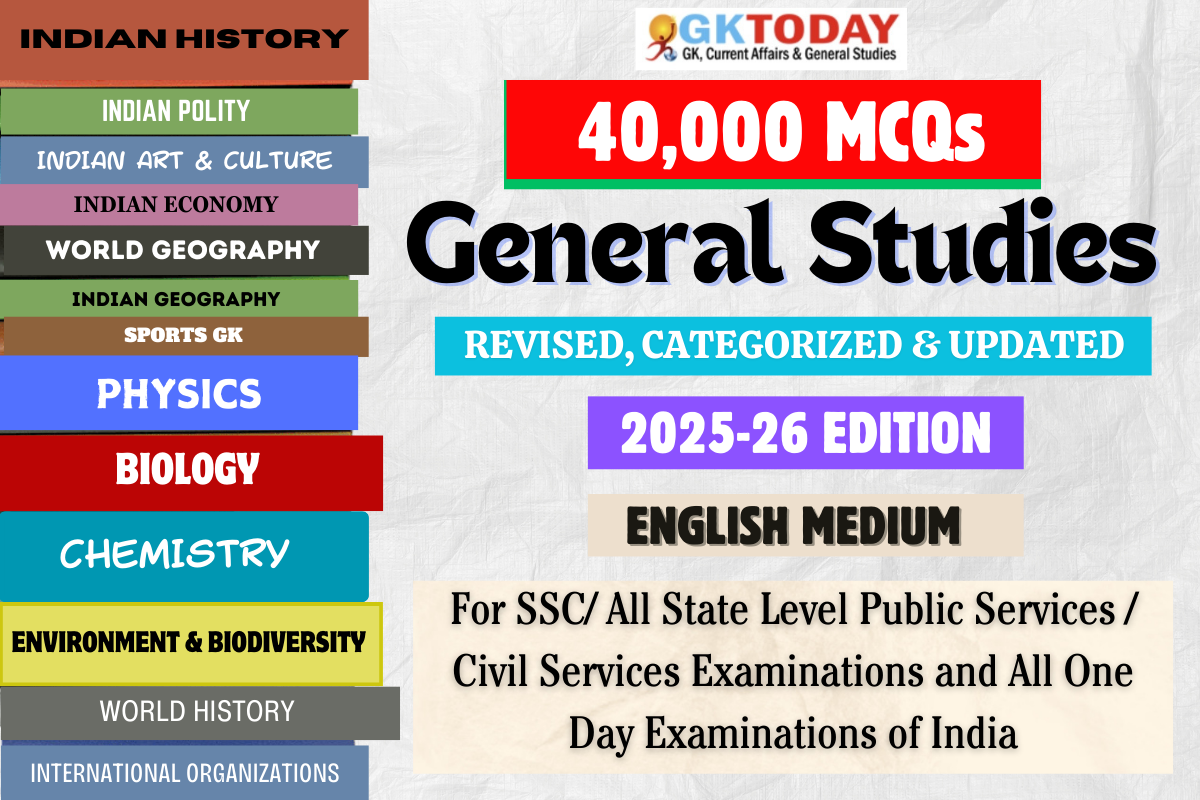Indian Economy MCQs
Indian Economy Multiple Choice Questions (MCQs) for SSC, State and all One Day Examinations of India. Objective Questions on Indian Economy for competitive examinations.
1. If there is an increase in the external commercial borrowings in India. What will be the impact on the external debt of the country?
[A] Increase
[B] Decrease
[C] Remain unaffected
[D] Either increase or decrease
Show Answer
Correct Answer: A [Increase]
Notes:
Any money that has been borrowed from foreign sources for financing the commercial activities in India are called External Commercial Borrowings. The Government of India permits ECBs as a source of finance for Indian Corporates for expansion of existing capacity as well as for fresh investment.
2. A mutual fund that invests in other mutual funds belonging to the same fund house or belonging to other fund houses is called ?
[A] FOF Fund of Funds
[B] Pool
[C] Portfolio
[D] None of the above
Show Answer
Correct Answer: A [FOF Fund of Funds]
Notes:
A fund of funds (FOF) is a f mutual fund that invests in other types of funds or hedge funds. It is also called as a multi-manager investment. Their advantages are broad diversification and appropriate asset allocation.
3. Through open market operations , RBI plays a very important role in which of the following markets?
[A] Gilt edged market
[B] Primary market
[C] Secondary market
[D] None of the above
Show Answer
Correct Answer: A [Gilt edged market]
Notes:
It’s a market for Gilt–edged Securities. These are high quality debt securities with very high credit worthiness issued by corporates or governments and hence they are named such. The probability of the organisation defaulting on interest and principle repayment is very low.
4. Note Printing Press that belongs to RBI is located in?
[A] Nasik
[B] Dewas
[C] Mysore
[D] Chennai
Show Answer
Correct Answer: C [Mysore]
Notes:
The Reserve Bank of India (RBI) has two currency printing presses in India: Mysore, Karnataka and Salboni, West Bengal.
The RBI’s presses are owned by Bharatiya Reserve Bank Note Mudran Private Limited (BRBNMPL), a subsidiary of the Reserve Bank. The other two currency presses in India are owned by the government and are located in Nasik and Dewas.
5. Which of the following Price Indices of India is considered for measuring ‘Headline Inflation’?
[A] GDP Deflator
[B] CPI-AL/RL
[C] CPI-IW
[D] WPI
Show Answer
Correct Answer: D [WPI]
Notes:
The correct answer is WPI (Wholesale Price Index). Headline inflation in India is primarily measured using the WPI, which reflects the price changes at the wholesale level for a basket of goods. The WPI includes prices of commodities like food, fuel, and manufactured goods, making it a comprehensive measure of inflation. In contrast, the CPI (Consumer Price Index) focuses on retail prices and consumer goods, while the GDP deflator measures price changes in all domestically produced goods and services. The WPI has been used in India since 1978, and it is crucial for policymakers to gauge inflation trends.
6. Which of the following industries is the major beneficiary of the Mumbai port ?
[A] Sugar and Cotton textile industry
[B] Cotton textile and Petrochemical industry
[C] Iron and Steel industry
[D] Engineering and Fertilizer industry
Show Answer
Correct Answer: B [Cotton textile and Petrochemical industry]
Notes:
Mumbai port has excellent harbor facilities for importing long staple cotton and machinery to meet the requirements of the petrochemical and cotton textile industries. Mumbai Port Trust is a port which lies midway on the West coast of India, on the natural deep water harbour of Mumbai in Maharashtra.
7. Who takes the decision regarding the saving and loan activities in a self Help Group (SHG)?
[A] Private Bank
[B] Reserve Bank of India
[C] Members of group
[D] Non Government Organizations
Show Answer
Correct Answer: C [Members of group]
Notes:
Self Help Groups (SHGs) are small groups of poor people. The members of an SHG face similar problems. They help each other, to solve their problems. SHGs promote small savings among their members.
8. In which of the following managements, the company handles the issues can have a positive or negative effect on their brand?
[A] Public Relations Issues Management
[B] Brand Issues Management
[C] Private Brand Issues Management
[D] None of the above
Show Answer
Correct Answer: A [Public Relations Issues Management]
Notes:
Public Relations of Issues Management is a process when a problem arises, the way the company handles the issues can have a positive or negative effect on their brand. Public relations is the process of providing information regarding the problem and the plans the company has to fix the situation.
9. Addu Tourism Zone is being developed by India and which country?
[A] Mauritius
[B] Maldives
[C] Myanmar
[D] Thailand
Show Answer
Correct Answer: B [Maldives ]
Notes:
The Addu Atoll is located in the Arabian Sea. The Laccadive Sea is located to its east. The atoll has a lagoon which gives access via 4 natural channels. The atoll is well protected from high waves and storms by its barrier reefs. The Addu Atoll is also known as the Seenu Atoll. It is under the administration of Maldives Government. The atolls natural islands are Hulhudhoo, Meedhoo, Maradhoo, Feydhoo, and Hithadhoo which are uninhabited. The tourism zone will cover these islands and will be established at the cost of 2.49 billion USD.
10. In which of the following circumstances, the total utility is maximum?
[A] Marginal utility is maximum
[B] Marginal utility = 0
[C] Marginal utility is minimum
[D] None of the above
Show Answer
Correct Answer: B [Marginal utility = 0]
Notes:
Total Utility is the sum of all the utilities derived from the consumption of all the units of a particular commodity. So when the marginal utility decreases total utility increases and is maximum when marginal utility is 0.

